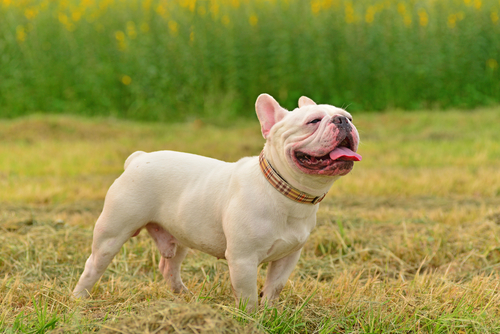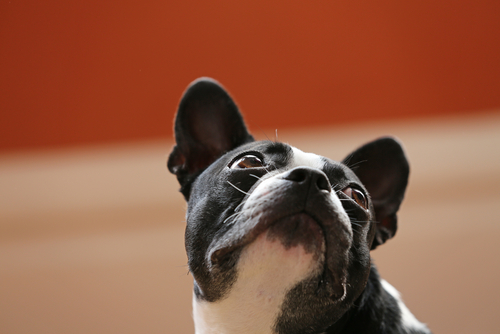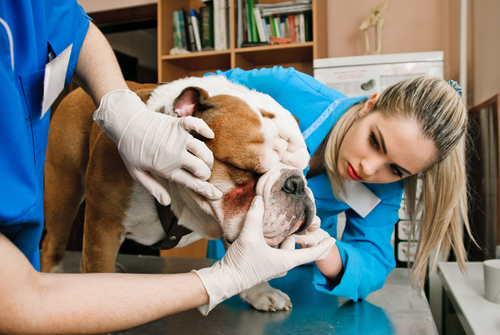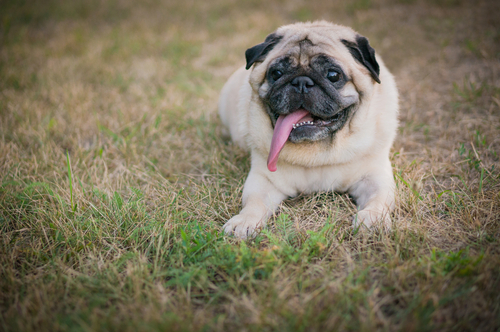You first might be wondering what the word “brachycephalic” means. Simply put, it refers to a condition in which a dog’s skull is shorter and flatter than a normal canid skull is typically shaped. Examples of brachycephalic (brack-ee-say-falick) breeds include Pugs, Bulldogs, Pekingese, Boxers and Mastiffs. These dogs have very short muzzles, wide foreheads and a whole lot of wrinkles on their faces. While many of these breeds are created to be this way on purpose, there are unfortunate disadvantages to having such an unnaturally shaped skull.
#1 – Brachycephalic Respiratory Syndrome

Brachycephalic Syndrome is an upper respiratory disorder that causes difficulty breathing and can be quite severe. While the skull shape of brachycephalic dogs has gotten shorter and wider, the rest of the anatomy has stayed the same size. This means they have disproportionate soft palates, tongues and nasal cartilage. The crowding of all this tissue and the narrower airway openings leads to obstruction. This condition causes significant danger during exercise, heat and stress where the dog cannot catch enough breath and the heart is overcome by too much pressure.
#2 – Eye Injuries

Because of the misshapen skull, the eyes of brachycephalic dogs don’t fit correctly into their sockets. This, of course, gives the breeds the bug-eyed look that can be so adorable. Unfortunately, it also means that these breeds are at a higher risk for eye injuries. Protruding eyes can also prevent the eyelids from closing completely, making them dry and irritated. Some breeds even run the risk of the eyes popping out of their sockets. Much more consideration has to be given to the eyes of brachycephalic breeds.
#3 – Dental Disease

Brachycephalic dogs have the same number of teeth as any other breed, but these teeth are stuck in a mouth that doesn’t always have room for them. Since the muzzle is so short, the teeth are often piled one on top of the other and are horribly crooked. This puts these dogs at a higher risk for dental disease as more plaque and tartar gets stuck in their teeth than others. Even vigilant owners who brush teeth daily might find their dogs still fall victim to dental disease.
#4 – Skin Infections

Brachycephalic dogs all have adorable, wrinkly faces, but hiding between those skin folds might be some nasty bacteria and yeast. Since the skin on brachycephalic dogs is so wrinkled, they need to be wiped clean regularly to prevent infection. Bacteria and yeast will gladly live in these folds and can cause very nasty infections that could need a few rounds of antibiotics.
#5 – Higher Anesthesia Risk

Brachycephalic dogs have a higher than normal rate of problems under anesthesia, mostly because their airways aren’t properly shaped. While most of them do just fine under the supervision of veterinarians and technicians, there are often higher costs associated with the extra monitoring needed to ensure your dog comes out of surgery safely. While most dog breeds only need tracheal intubation, most brachycephalic breeds will need both tracheal and nasal intubation.
